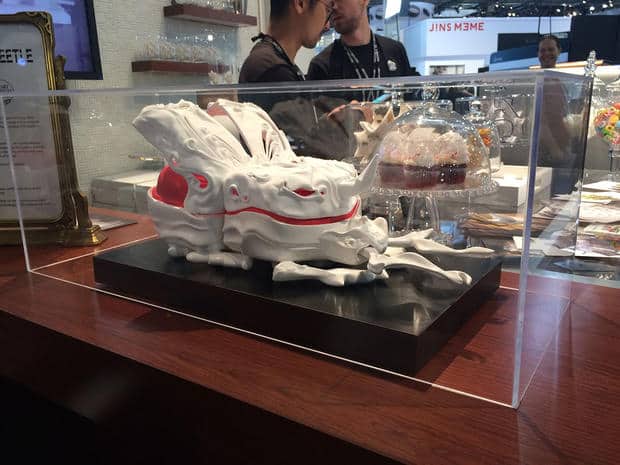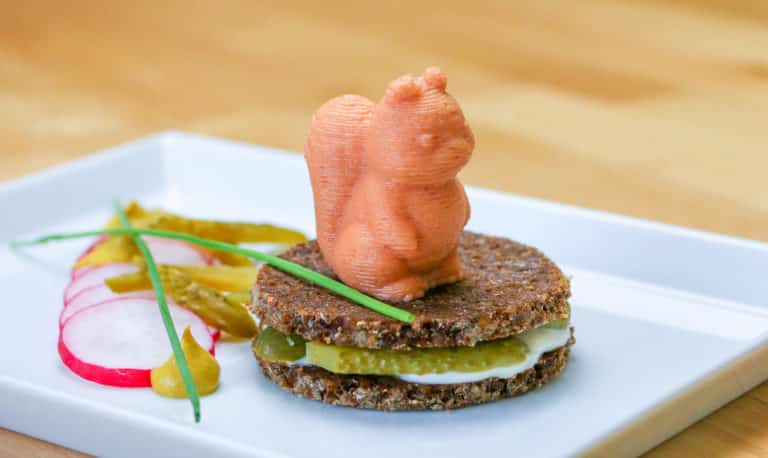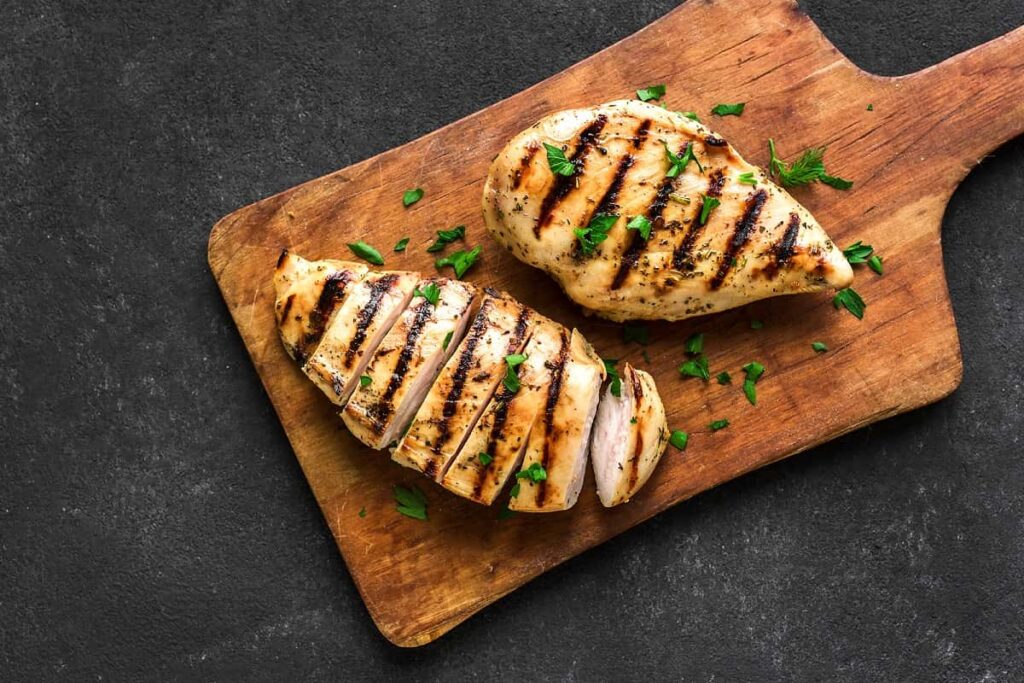Yum? 8 Companies Doing 3D Food Printing
Table of contents

It’s the holidays, so naturally, we’ve been thinking about food. Of course, since we write about all these weird and wonderful emerging technologies, our menu at this time of year veers away from the usual turkey and ham and includes some crazy isht. Like burgers grown from cow cells and eggnog with dairy proteins that have been fermented like beer from genetically modified yeast. So if you’re wondering what to get the foodie in your life with a fetish for tech, look no further than 3D printers, as in 3D food printing.
First, let’s get the obvious analogy out of the way: the so-called replicator on Star Trek. Second, let’s be clear: 3D food printing is (if we can mix fictional universe metaphors) in a galaxy far, far away from synthesizing fruit cake or Klingon bloodwine from subatomic particles. In fact, some of the 3D printers we came across for this piece seem to us to be little more than automated cake frosting machines. Still, the concept may have some merit, especially as technology, particularly in areas like healthcare, becomes more and more customized and personalized through artificial intelligence. We can envision—as more than one CEO of the companies below has in interviews—the day when our wearable will signal our at-home smart 3D food printer to spit out the right combination of carbs, nutrients, and vitamins based on our genetics and physiology. In the meantime, here are eight companies doing 3D food printing now.
Pizza That’s Out of this World


The company recently got a grant from the U.S. Army to develop 3D food printing for personal nutrition. In addition to pizzas, BeeHex also markets its 3D food printing technology for creating desserts. The company’s long-term strategy is to see Chef 3D being used at high volume events such as sporting venues and amusement parks.
A Smart 3D Food Printer
You could bet your kid’s college fund that just about any list we do these days includes at least one company that claims to be using artificial intelligence in some form or fashion. Natural Machines, out of Santa Monica, California, is that startup, having raised $1 million. Founded in November 2012, Natural Machines is developing the Foodini, the only 3D food printer that we’ve found that claims it can make anything you want using fresh ingredients. The company says the Foodini employs AI and computer vision to monitor and optimize each dish before it’s printed. The printer also connects to the internet, with a built-in touchscreen interface for 3D printing food. The idea is that Foodini can help make meals more healthy by handling difficult, time-consuming tasks such as building raviolis from scratch.

CB Insights reported that the machine will retail for about $1,500 when it hits the commercial market but Natural Machines says on its website that early models are selling for about $4,000 before it can scale to mass-market production.
3D Food Printing was so 2015
It’s not just startups with a hunger for 3D food printing. 3D Systems (NYSE:DDD) introduced the ChefJet 3D a couple of years ago. Since then the company has established a 3D Culinary Lab where “chefs, mixologists and culinary innovators of all walks can experience the intersection of traditional culinary craft and 3D printing”. Read: Fancy restaurants are figuring out ways to further miniaturize your overpriced entree. 3D System is collaborating with the likes of the Culinary Institute of America, though most of the news about the ChefJet dates back to 2015, so it’s unclear if the printer is still part of the company’s product portfolio.

Lately, 3D Systems has had more to worry about than 3D food printing evil bunnies (as above). The company’s stock is down more than 30 percent for the year.

3D Kosher Food Printing
But is it Kosher? If the food material comes from the Yissum Research Development Company, which monetizes the big-brain ideas that come out of the Hebrew University of Jerusalem, then the answer is “yes”. The company recently introduced a natural, edible, calorie-free fiber called nanocellulose that it says can be used to 3D print personalized food. The “self-assembly” properties of nano-cellulose fibers help bind different food components such as proteins, carbohydrates and fat, a well as provide controls on food texture. An infrared laser can “cook” the … um, goop? … so that the final product can appear baked, grilled or fried. The company claims that nanocellulose can serve multiple markets: gluten-free, meat substitutes, vegetarian and vegan, low-calorie diets, diets for people with diabetes, etc. So far, it can make it pizza dough.
Leave it to the Europeans



The code is generated by a computer program called a slicer, which slices a 3D model into layers and writes the printing instructions for each layer.
Print2Taste, founded in 2014, was spun out of a German university. Its 3D food printer is called the Bocusini, and the device can print out everything from lobster-shaped pasta (seven minutes per crustacean) to squirrel-shaped sausages.

The printer retails for about €2,362 ($2,800). The company also sells pre-filled cartridges of chocolate, marzipan, and pasta, but it’s also possible to be creative and make your own pork squirrels, as one does for those high-class woodland dinner parties.
Conclusion
Some days we find that the cutting-edge technology we write about will change the world. And then there is 3D food printing. Unless you’re a professional chef or pastry cook, it’s hard to justify throwing down a few thousand euros or dollars on a 3D food printer, and it’s certainly too specialized a technology to invest in outside of buying stock in a public 3D printer company. It still seems more like a party trick or gimmick, sort of like the Food Ink project, a pop-up restaurant where everything was 3D printed from the utensils to the food. We’ll stick to eating the kinds of food as god intended—meat grown in a lab from a cow’s cell biopsy. Yum.
Sign up to our newsletter to get more of our great research delivered straight to your inbox!
Nanalyze Weekly includes useful insights written by our team of underpaid MBAs, research on new disruptive technology stocks flying under the radar, and summaries of our recent research. Always 100% free.














